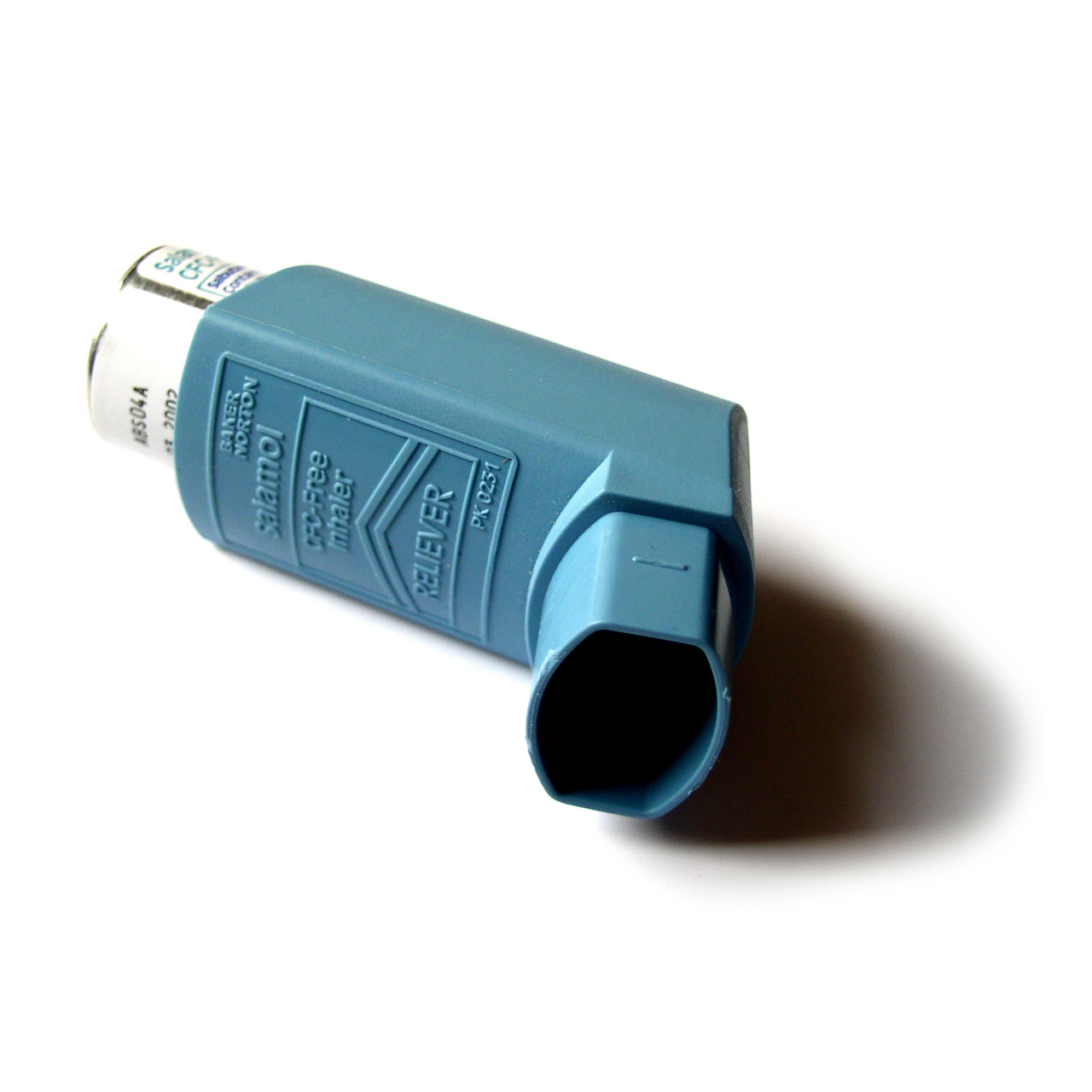Asthma is a fairly common and often serious disease in the US and around the world. Asthma is characterized by coughing, shortness of breath, wheezing, and tightness or pain in the chest. Asthma attacks can be triggered by allergens, air pollution, tobacco smoke, exercise, and occupational exposures to chemicals. In this country, about 9% of children and 8% of adults have some form of asthma. This means that more than two and a half million people in the US have asthma. Asthma is somewhat more common in females (9.0% vs. 6.3% in males) and blacks (9.9% vs. 7.6% in whites and 6.7% in hispanics).
It has been estimated that about 15% of adults with asthma have that disease because it was caused or exacerbated by chemical or biological agent exposures in the workplace. Most sources indicate that at least 250 different agents in the workplace can cause asthma or make it worse. These include chemical agents like isocyanates; acrylates; metals such as nickel, cobalt, platinum, and chromium; fungicides; and irritant chemicals including ammonia, chlorine, nitrogen oxides, sulfur oxides, and welding fumes. Cleaning chemicals have also been implicated as “asthmagens”. Biological agents can also cause or contribute to asthma. These include grain dust, seafood proteins, molds, plant and animal enzymes, and wood dust.
The American Cleaning Institute, in conjunction with the Toxicology Excellence in Risk Assessment organization, is sponsoring a series of webinars concerning chemical-induced asthma. The first webinar was held on February 25, 2016. It was presented by Dr. Jonathon Bernstein who is with the University of Cincinnati Medical School. Other webinars in this series will be held in the months to come.
Dr. Bernstein’s presentation covered the complexities of diagnosing asthma, the methods used in diagnosis, and future directions in asthma research. He demonstrated what is known about the pathophysiology of asthma and the key role that airway inflammation plays in the disease. There are several steps in development of an asthmatic response. First, inhalation of a chemical or biological agent causes damage to airway cells. If the damage is wide-spread, the body’s attempts at repair can lead to the release of mediators that further damage the cells. This starts the cycle of damage, failed repair, release of mediators, and further damage. The result is a thickening of the airways and the instillation of airway hyper-responsiveness, a key feature of asthma.
The second webinar in this series was presented by Judy LaKind, a private consultant, on June 17, 2016. She discussed the major issues and challenges of exposure assessment, a key component of human health risk assessment, as it pertains to cleaning chemicals exposure and asthma. The major chemicals involved in the cleaning industry include ammonia, bleach, hydrochloric acid, monoethanolamine, aldehydes, and sodium hydroxide. Exposure levels can be determined by direct environmental measurements, by biomonitoring, or estimated by using computational models. Different approaches are used to assess personal (in home), recreational (eg. swimming pool disinfection), or occupational exposures of cleaning professionals.
If you are interested in joining future webinars on this topic, go to the American Cleaning Institute’s web site: http://www.cleaninginstitute.org/science/webinar_series_chemicalinduced_asthma.aspx. You can find out more information about asthma in general and work-related asthma at the following web sites:
http://www.cdc.gov/asthma/asthmadata.htm
http://www.cdc.gov/asthma/impacts_nation/asthmafactsheet.pdf
http://www.cdc.gov/mmwr/preview/mmwrhtml/mm6120a4.htm
http://www.atsjournals.org/doi/pdf/10.1164/rccm.200311-1575SO





